London has always had areas which attracted specific types of trade, shops and industry, a number of which clustered around Tottenham Court Road underground station.
To the south, along Charing Cross Road was Foyles and a range of second hand bookshops (some of which remain, along with Foyles in their new location). To the north, along Tottenham Court Road was to be found a large number of electronics shops. It was here that I bought my first calculator whilst still at school in 1976, a Decimo Vatman, so called because as well as the normal addition, subtraction, multiplication and division keys, it also had a (revolutionary for the time), percentage key. When I last walked along Tottenham Court Road, nearly all of these electronics shops have now disappeared.
The Paolozzi mosaics at Tottenham Court Road underground station featured designs including cameras, electronics, music shops and saxophones to reflect the area around the station. It is these last two which feature in this week’s post, from a street I have been wanting to photograph for some time as the area is changing considerably. Walk a short distance south along Charing Cross Road and you will find Denmark Street, a street that has been the hub of the music industry for many decades.
I walked to Denmark Street early on a very sunny morning – not always the best for photography with the contrast between light and dark.
Looking back up towards the large building site at the top of Charing Cross Road, an indication of what is happening to the area:
On the corner of Charing Cross Road and Denmark Street:
Looking down Denmark Street from Charing Cross Road, a mix of architectural styles, with at the end of the street, a sign of things to come with the standard new build that can now be found anywhere across London.
According to George Cunningham in “London – a Comprehensive Survey”, Denmark Street was built in 1689 and is the scene for the Noon drawing from Hogarth’s series Four Times of The Day. The drawing contrasts the different populations of the area, an elegant crowd leaving a French Huguenot Church, compared with a rowdy crowd of Londoners outside a tavern.
Numbers 4, 5, 6, 7, 9 and 10 Denmark Street, although having had many alterations, are still much the original buildings from the 1689 construction of the street.
Denmark Street is now mainly guitar shops, but at the peak of the music industry here in the 1960s was also the home of music publishers, recording studios, and the music papers NME and Melody Maker.
Wunjo Guitars and the Gary O’Toole School of Music:
There have been a number of recent closures, including this Saxophone shop which has now moved to Hampstead Road.
The old signs still on the building:
Number 6 Denmark Street, one of the remaining 17th century townhouses which was recently Grade II listed. The building was the home of the Sex Pistols for a time in the 1970s and has John Lydon’s graffiti still on the walls.
Number 5 was the London home of Augustus Siebe who designed a version of the diving helmet which was detachable from the main body and included a valve in the helmet. This new design revolutionised diving for the construction, naval and salvage industries.
Number 7, the Smoking Goat restaurant:
Rose Morris, opened in Denmark Street in 1920:
Plaque recording the alternative name sometimes used for the street:
Music Room:
Westside:
Regent Sounds Studio. The original recording studios here were used by the Rolling Stones to record their first album. Others recording here included the Kinks and Black Sabbath:
Guitars are everywhere:
Taking photos of guitars in the sun:
Hanks Guitar shop:
Denmark Place alley, adjacent to Hanks, closed now and subject to a stopping-up order due to the large development at the rear of Denmark Street:
Denmark Place – an old alley, now with nowhere to go:
Yet more guitars:
Looking back up Denmark Street towards Charing Cross Road:
The opposite side of the street:
At the end of Denmark Street is St. Giles-in-the Fields. Outside the church and looking back at the corner of Denmark Street. New building to the right:
Looking down St. Giles High Street towards the Centre Point building which is now being redeveloped and will consist of “82 highly exclusive, superior luxury apartments” .
The redevelopment will also apparently transform the area into “one of the most visited retail, leisure and prime residential hubs in the country”. I fully agree that the area around Centre Point was in need of development, however I fear this area will now become the hub of ridiculously expensive luxury apartments and global retail brands – much as can be found across the rest of London with no local character or acknowledgement of the areas history.
To see the scale of construction, walk down St. Giles High Street and turn left to see this example of facadism. The whole area at the rear of Denmark Street is being rebuilt and the old facade onto St. Giles High Street looks to be the only part that will possibly remain.
Although the 1960s and 1970s were the peak for the music industry in Denmark Street, it still retains a very unique character, which I fear will be lost in the years ahead as the area sucumbs to the corporate development which is sanitising so much of London. Specialist shops will go online or disperse across London (as with the Sax shop) and the impact of clustering a specific trade will be lost.
For an in depth look at Denmark Street, I recommend the excellent Street of Sound photo blog.






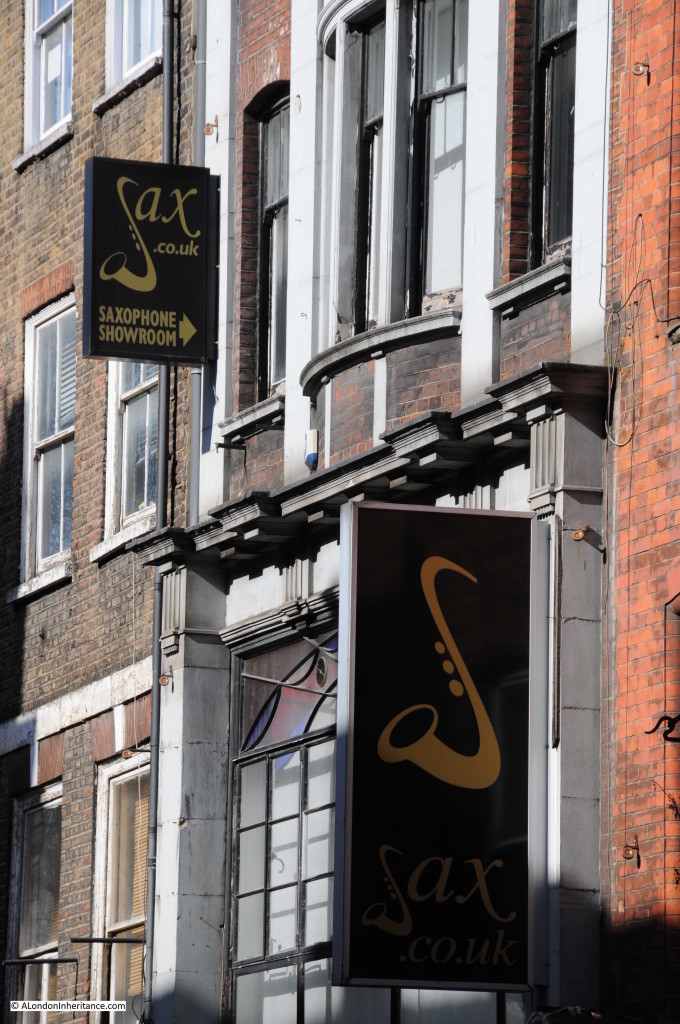
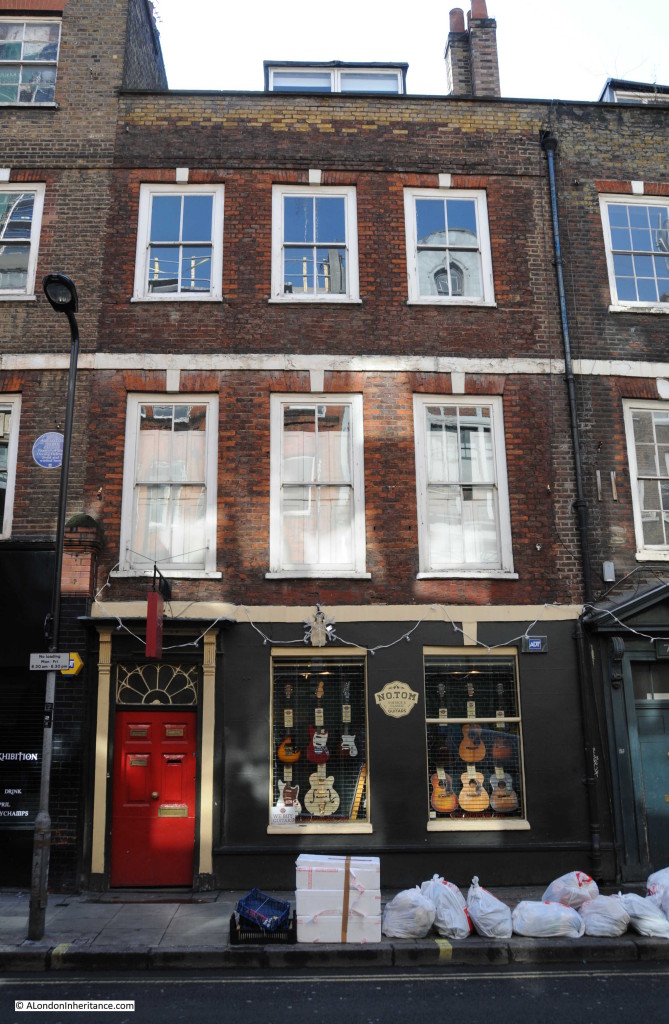
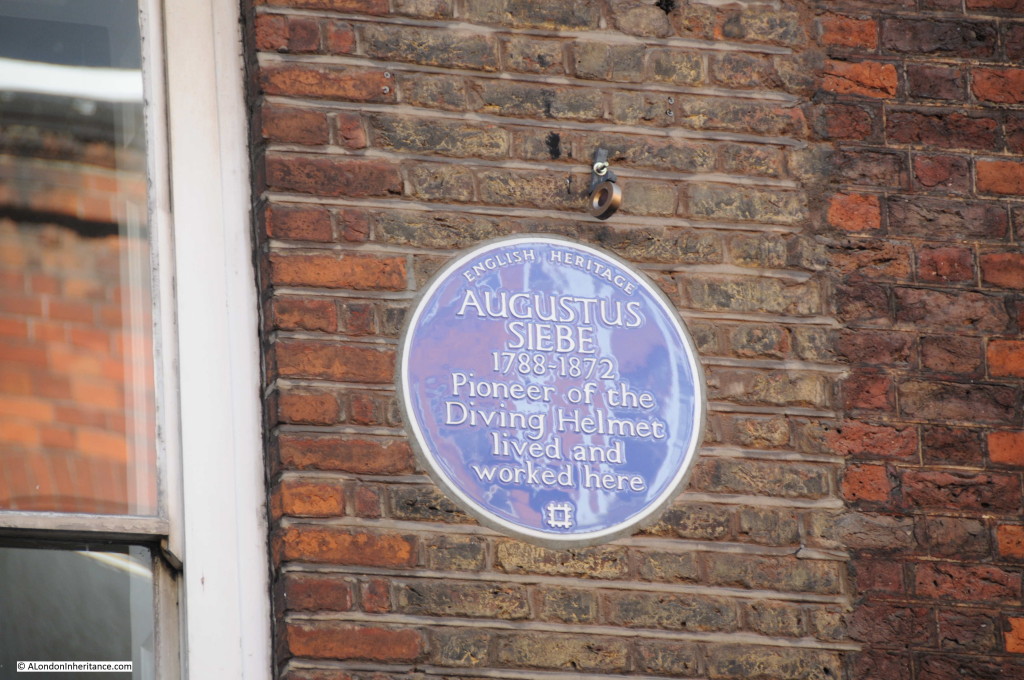
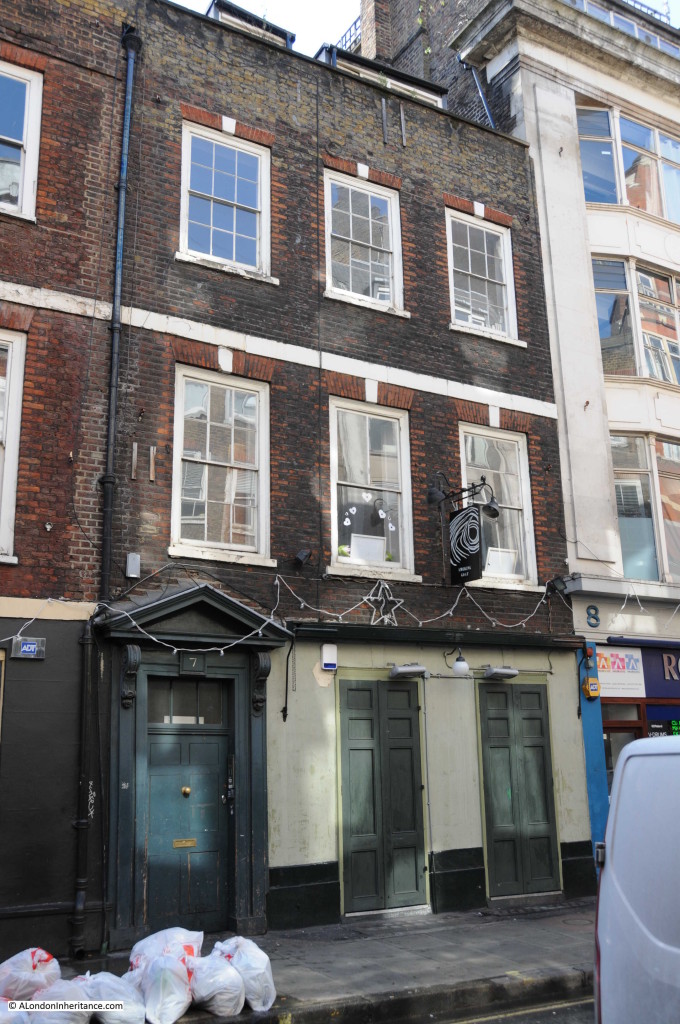
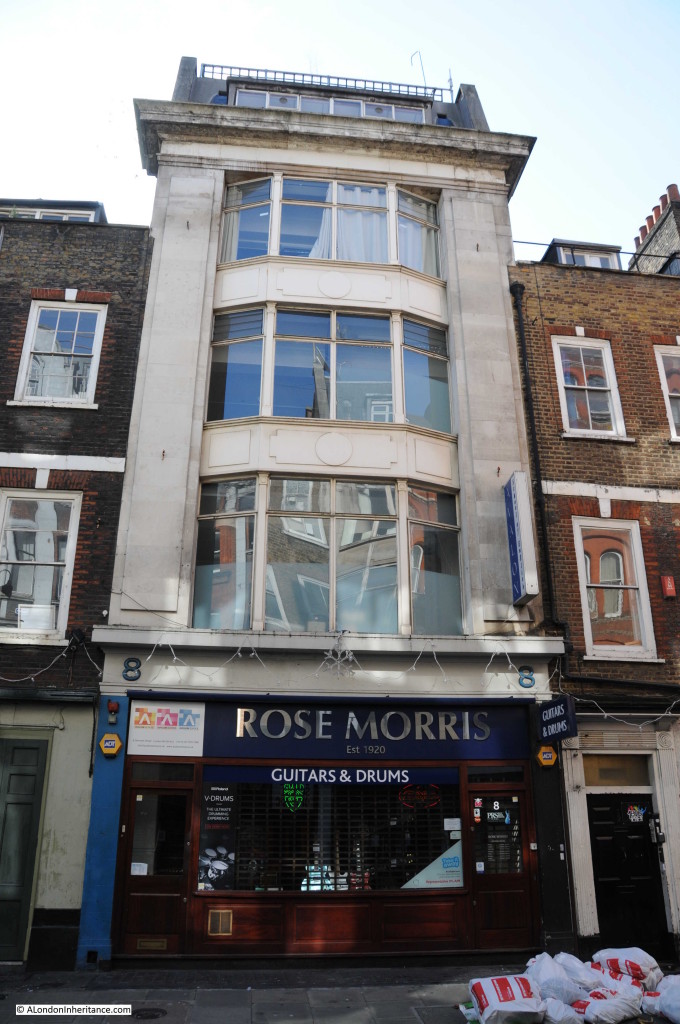


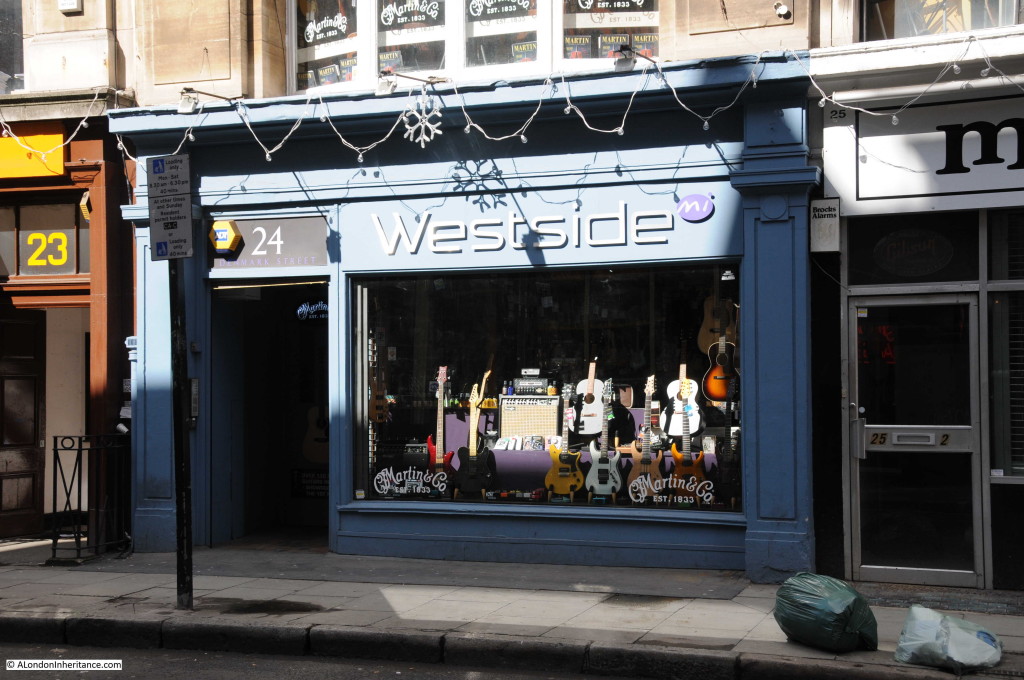

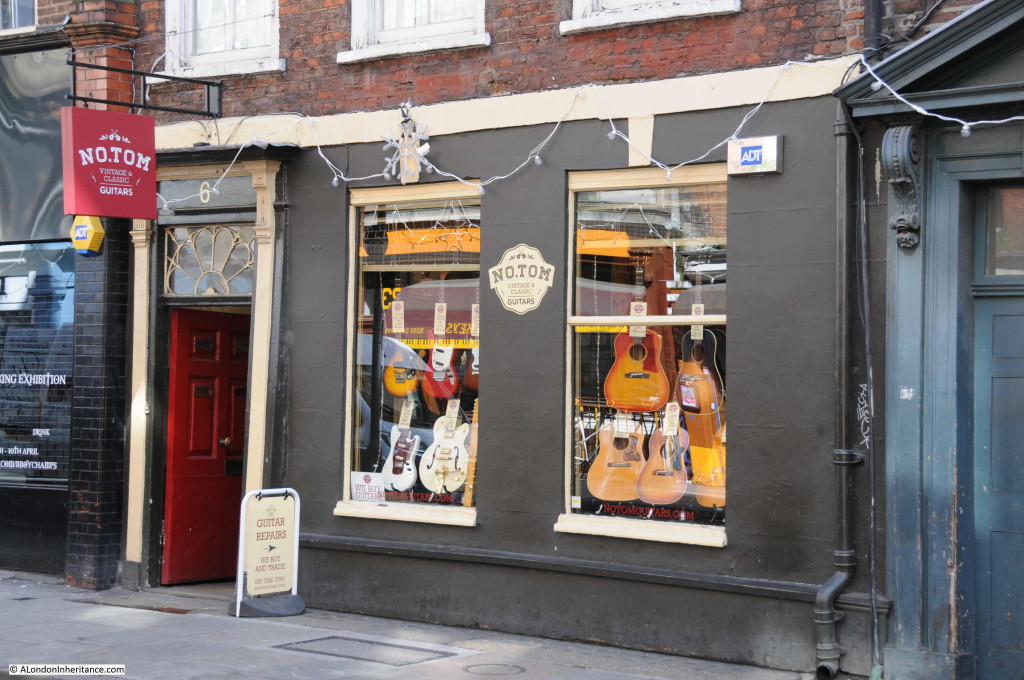
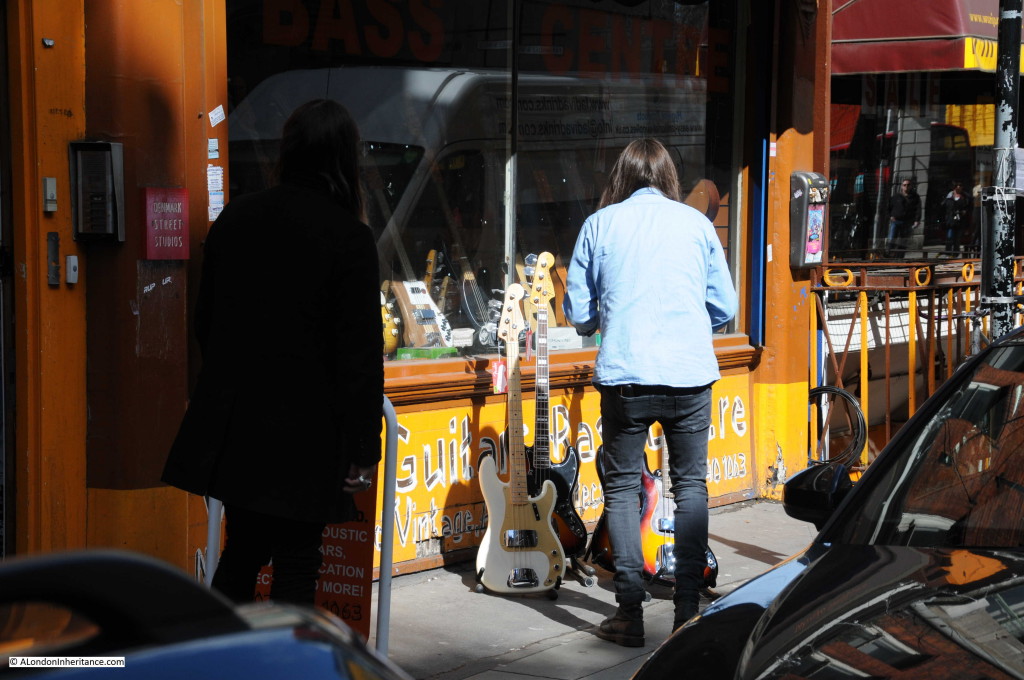
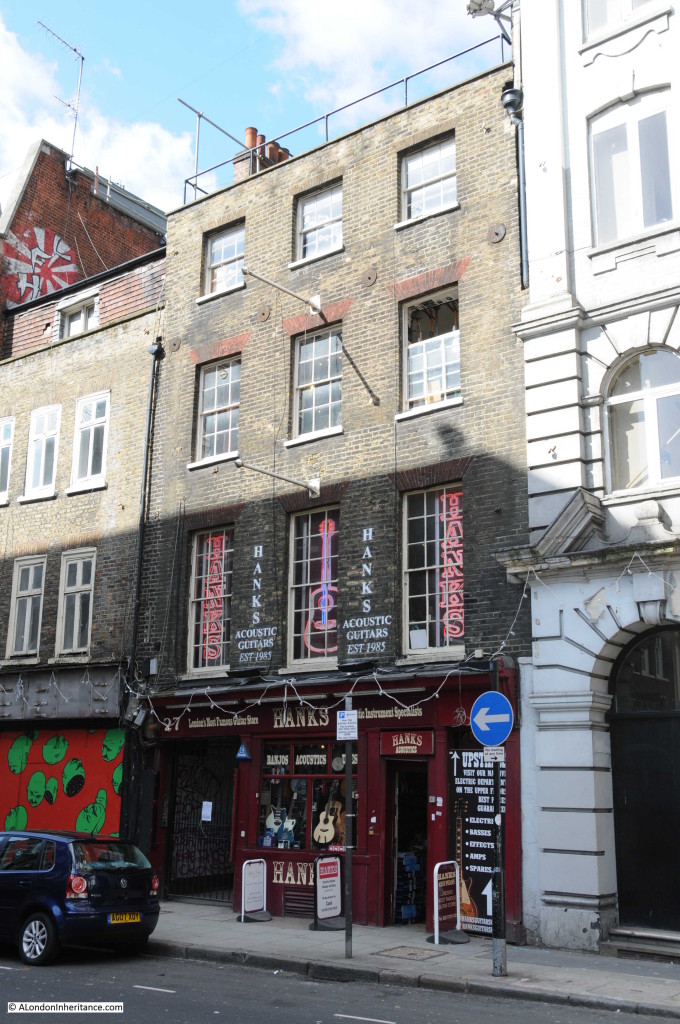

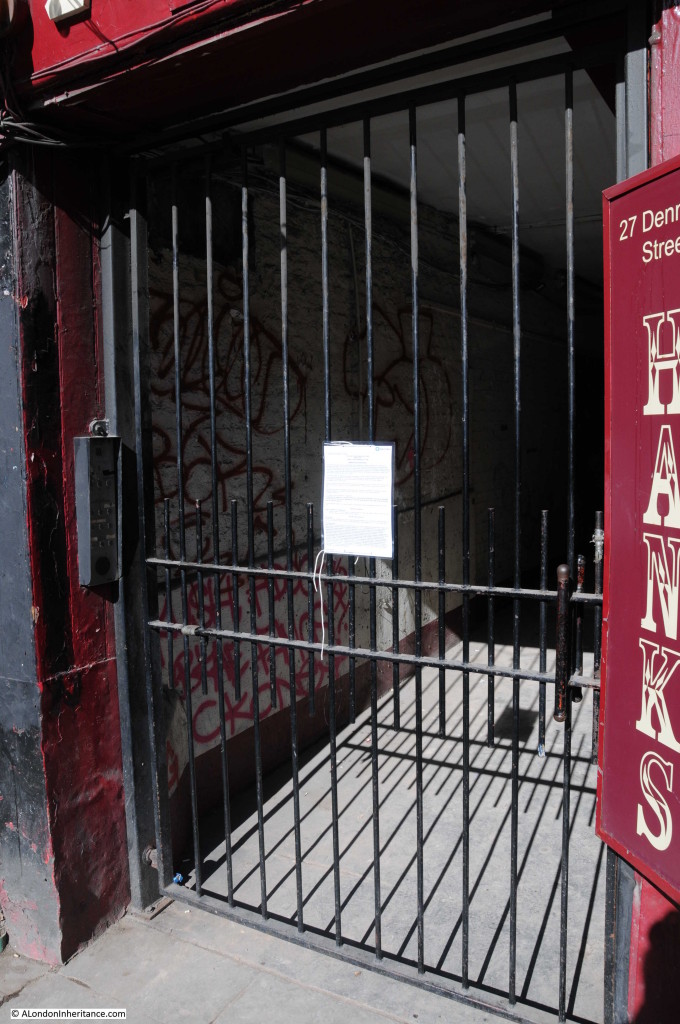
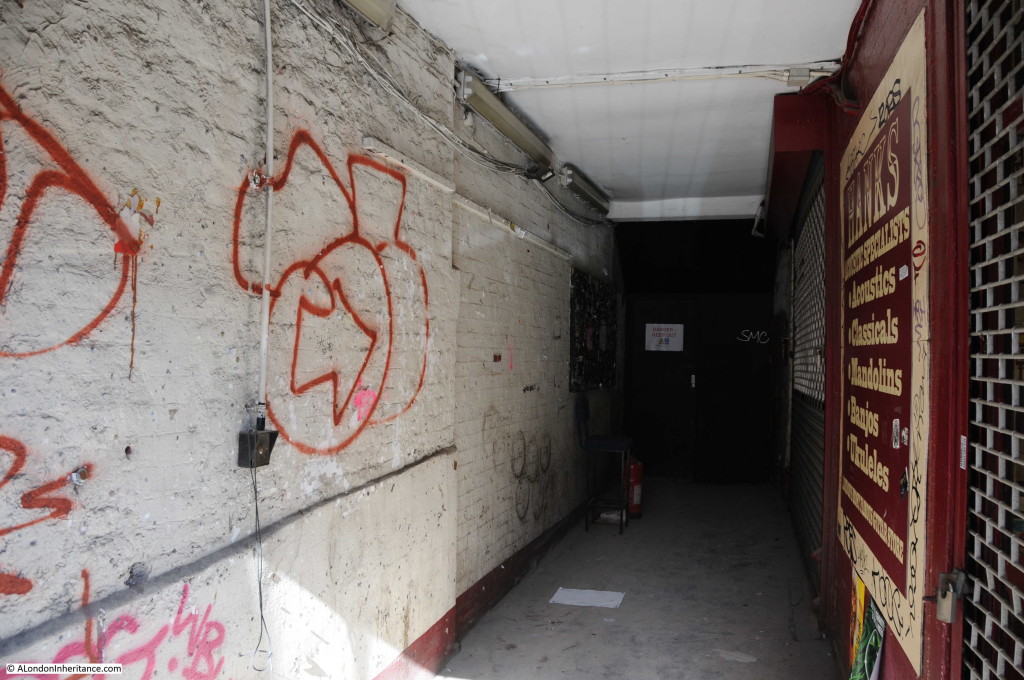





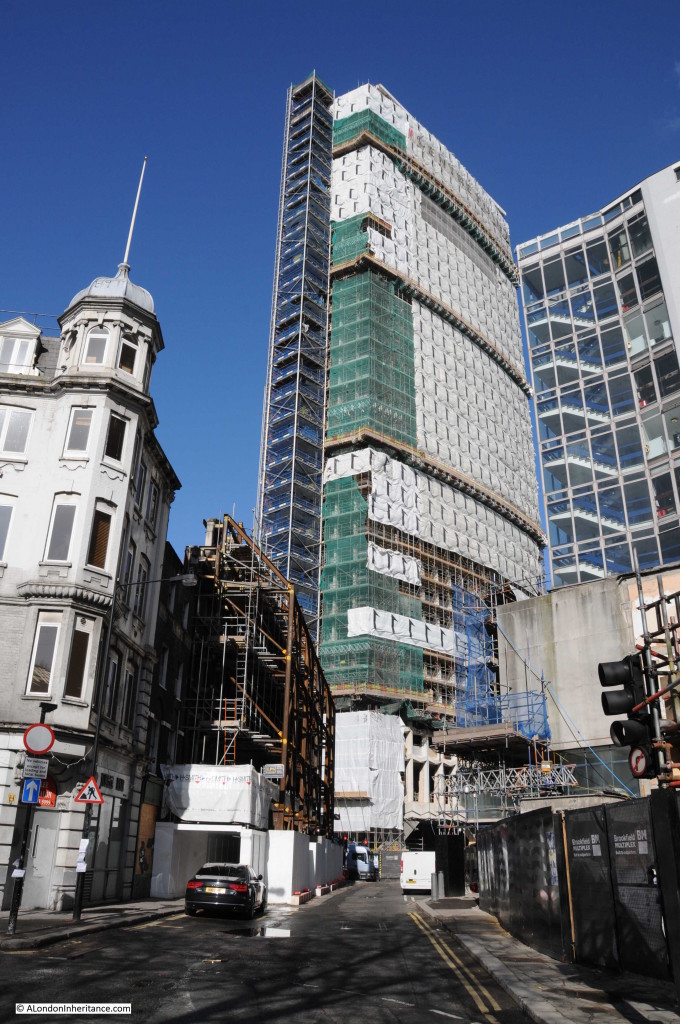

Back in early nineties for a young heavy metal fan from Eastern Europe Denmark Street was the Holy Land of Rock Music. In one of the shops I bought my first electric guitar for monies I have been earning hard all summer and it was a dream come true – I was to rival Satriani, Friedman an Hammett in no time at all.
Well – it was never meant to be – these days as middle aged architect working near by I visit Denmark St often to have a nice steak at Flat Iron and mourn the decline of the music character of the place. I couldn’t agree more – transferring the street into one more gentrified corner of London with characterless mix of ‘world brand shops’ is a disgrace and planning failure…
I could not agree more with Mike that the whole area is being desecrated. All its character, history, humanity and heritage is being ripped out and replaced with the usual piles of glass and concrete simply to make someone rich. If only the planners, “developers” and architects who are parachuted into this and similar areas had to live and work there they would think differently. So, so sad in my opinion.
You ought to mention the former Hotel & Catering jobcentre on the corner of Denmark Street which was the place of work of notorious Muswell Hill murderer Dennis Nilson.
Denmark Street was named after Queen Anne’s husband, George of Denmark. Poor couple: despite 17 pregnancies, only one child survived infancy, and even he did not reach adulthood.
As I understand it, Hogarth’s “Noon” was set in Hog Lane, which later became Flitcroft Street.
Denmark Place was the location of a nasty but until recently nearly forgotten night club fire in 1980, which killed 37 people – said to be the most in one fire incident in London since the Second World War.
Your more recent post on the Saint Giles Pound has caused me to revisit this. I was clearly wrong about Flitcroft Street (trust me to believe something I read on the internet!).
Clearly Hog Lane became Crown Street, which became part of Tottenham Court Road.
The Huguenot church depicted by Hogarth was the former Greek Church on Hog Lane, which later became the site of St Mary’s, Charing Cross Road.
There are suggestions that Greek Street, to the west in Soho, takes its name from the Greek church.
Fascinating how events from the 1600s have echoes in 21st century geography.
Andrew, it is fascinating how events from the 1600s still have some impact on the streets today. I also find it fascinating how investigating something apparently in isolation (such as a milestone in Highgate) can reveal apparently unconnected facts (such as Hog Lane being the original name for the northern end of Charing Cross Road). It just takes time to research and put together isolated facts into a complete story.
I was in Denmark Street last year for the first time in many years. It looks OK but it’s not as I remember it and it is obviously fragile. With present economic policies and a willingness to desecrate the social fabric I fear it won’t last much longer. The signs are there – the saxophone shop gone to Hampstead Road. The businesses won’t be able to afford rampant rises in rents and the inevitable offers that will come in for people looking for investment opportunities (often a place to channel hot money).
I hope I’m wrong but I can’t see where a kick back against those forces will come from.
I fully realize I’m a lone voice in the wilderness but London has always reinvented itself and always will. It’s all very well romanticizing the bygone era of snuff shops, boot repairers, or theatrical chemists but none of us are actually buying this stuff which is why it dies. Denmark Street’s guitar shops may seem tremendously exciting to someone into the 60s music scene but in reality they’re a grotty collection of run-down buildings ripe for redevelopment. Who mourns the manufacturers of bowler hats or gentlemen’s starched collars or penny farthings or mangles (I’m guessing) that they replaced?
I love London history as much as anyone as reading this blog (I’m currently studying for a part-time History degree at Birkbeck) but it cannot be preserved in situ. I moved to London in 1993 for work and during my relatively brief time here I’ve seen two large developments at first hand: Spitalfields Market and Paternoster Square. Both were widely criticized in advance, accused of destroying the character of the places, losing our history etc and both are … fantastic! The spaces have been completely revitalized. The area around Denmark Street, Tottenham Court Road, Centre Point has been a unpleasant dump for decades. Let’s give the developers a chance before we condemn what it becomes.
The developer have had plenty of chances and look at the inhuman mess they have left us in the pursuit of their profit and their archtects inflated ego.
Nowadays in London “development” inevitably means piles of concrete, steel and glass offices that usually lie empty for years and housing for oligarchs. That is what will happen to Denmark Street while the small businesses are priced out of existence.
Still, the developers make a good financial killing so that’s all ok then !
Hi. In the mid 60s would you possibly know the pub that was on the corner of Denmark st and charring cross road.
Thank you
Bernie
Its not just music, I remember taking a pilgrimage down there from Liverpool in the mid-eighties to the original home of the great comic shop forbidden planet. I still have the judge dredd candle I bought there too!
Not just comics either. There used to be a bookshop in Denmark Street called Zeno which specialised in Greek and Byzantine texts. There was another one just round the corner in Charing X Road called Hellenic Bookservices which is now in Kentish Town. The local Greek collection lingered much longer than the 1600s!
Zeno Booksellers/Zeno Booksellers and Publishers/ M.P. Zographos ‘Cyprus Is In The Heart Of London’ were around at least since 1948 in Denmark Street – the latest I can find them is 1997.
Helter Skelter, who sold music books were at No.4 from 1995-2004
There were also other bookshops/sellers before this
Forbidden Planet at No.23 from July 1978, later Forbidden Planet 1 – Forbidden Planet 2 was later in St Giles High Street
When I started coming to London at the end of the 80s TCR was also the cluster for house shops: as well as Heals and Habitat they’re was the Reject Shop, sofa places and some others that I can picture without knowing the names. Now there are so few shops selling new home wares on the high street.
*there!
Progress? Can’t stop it. I’m just sad to see beautiful, historic Denmark Street desecrated with glass and steel.